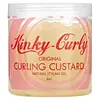What's inside
What's inside
 Key Ingredients
Key Ingredients

No key ingredients
 Benefits
Benefits

 Concerns
Concerns

 Ingredients Side-by-side
Ingredients Side-by-side

Water
Skin ConditioningGlycerin
HumectantCellulose Gum
Emulsion StabilisingAloe Barbadensis Leaf Extract
EmollientPectin
Emulsion StabilisingHydroxypropyltrimonium Honey
Silk Amino Acids
HumectantHypnea Musciformis Extract
Skin ProtectingGelidiella Acerosa Extract
Skin ProtectingSargassum Filipendula Extract
Skin ProtectingSorbitol
HumectantRosmarinus Officinalis Leaf Extract
AntimicrobialSalix Alba Bark Extract
AstringentUrtica Dioica Extract
AstringentEthylhexylglycerin
Skin ConditioningPhenoxyethanol
PreservativeCitrus Iyo Oil
EmollientCitrus Limon Peel Oil
MaskingCitrus Aurantifolia Oil
CleansingCitrus Paradisi Peel Oil
MaskingParfum
MaskingWater, Glycerin, Cellulose Gum, Aloe Barbadensis Leaf Extract, Pectin, Hydroxypropyltrimonium Honey, Silk Amino Acids, Hypnea Musciformis Extract, Gelidiella Acerosa Extract, Sargassum Filipendula Extract, Sorbitol, Rosmarinus Officinalis Leaf Extract, Salix Alba Bark Extract, Urtica Dioica Extract, Ethylhexylglycerin, Phenoxyethanol, Citrus Iyo Oil, Citrus Limon Peel Oil, Citrus Aurantifolia Oil, Citrus Paradisi Peel Oil, Parfum
 Reviews
Reviews

Ingredients Explained
These ingredients are found in both products.
Ingredients higher up in an ingredient list are typically present in a larger amount.
Parfum is a catch-all term for an ingredient or more that is used to give a scent to products.
Also called "fragrance", this ingredient can be a blend of hundreds of chemicals or plant oils. This means every product with "fragrance" or "parfum" in the ingredients list is a different mixture.
For instance, Habanolide is a proprietary trade name for a specific aroma chemical. When used as a fragrance ingredient in cosmetics, most aroma chemicals fall under the broad labeling category of “FRAGRANCE” or “PARFUM” according to EU and US regulations.
The term 'parfum' or 'fragrance' is not regulated in many countries. In many cases, it is up to the brand to define this term.
For instance, many brands choose to label themselves as "fragrance-free" because they are not using synthetic fragrances. However, their products may still contain ingredients such as essential oils that are considered a fragrance by INCI standards.
One example is Calendula flower extract. Calendula is an essential oil that still imparts a scent or 'fragrance'.
Depending on the blend, the ingredients in the mixture can cause allergies and sensitivities on the skin. Some ingredients that are known EU allergens include linalool and citronellol.
Parfum can also be used to mask or cover an unpleasant scent.
The bottom line is: not all fragrances/parfum/ingredients are created equally. If you are worried about fragrances, we recommend taking a closer look at an ingredient. And of course, we always recommend speaking with a professional.
Learn more about ParfumPectin is a fiber naturally found in the cell walls of plants.
It is commonly used a thickening agent in both food and cosmetics. In skincare, it prevents ingredients from separating.
This ingredient is more commonly known as nettle extract. It has soothing, antimicrobial, and antioxidant properties.
The antimicrobial properties of nettle come from its gallic acid content.
Water. It's the most common cosmetic ingredient of all. You'll usually see it at the top of ingredient lists, meaning that it makes up the largest part of the product.
So why is it so popular? Water most often acts as a solvent - this means that it helps dissolve other ingredients into the formulation.
You'll also recognize water as that liquid we all need to stay alive. If you see this, drink a glass of water. Stay hydrated!
Learn more about Water